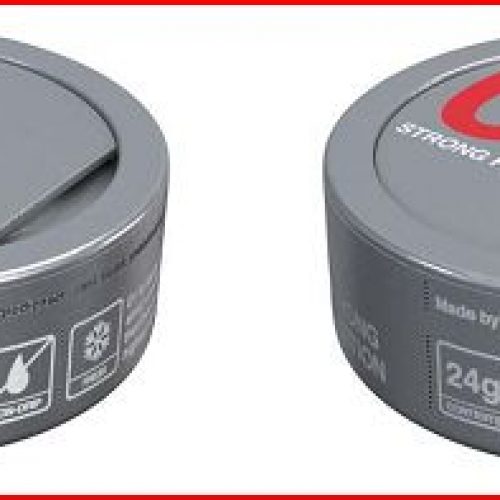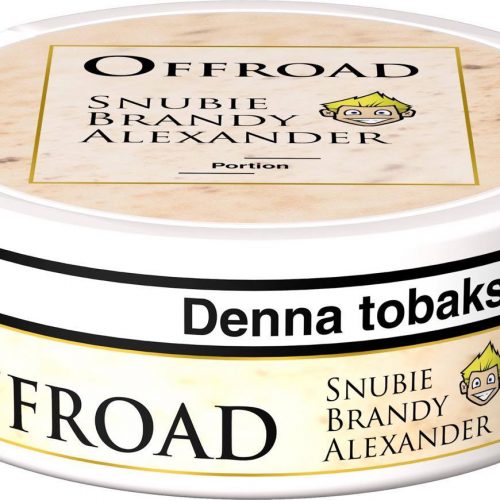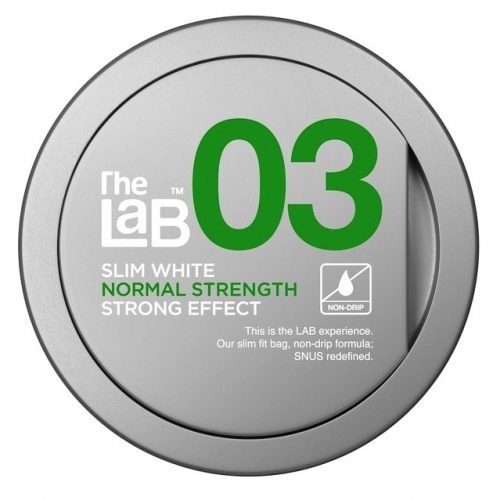How will FDA Regulation of Tobacco affect YOU?
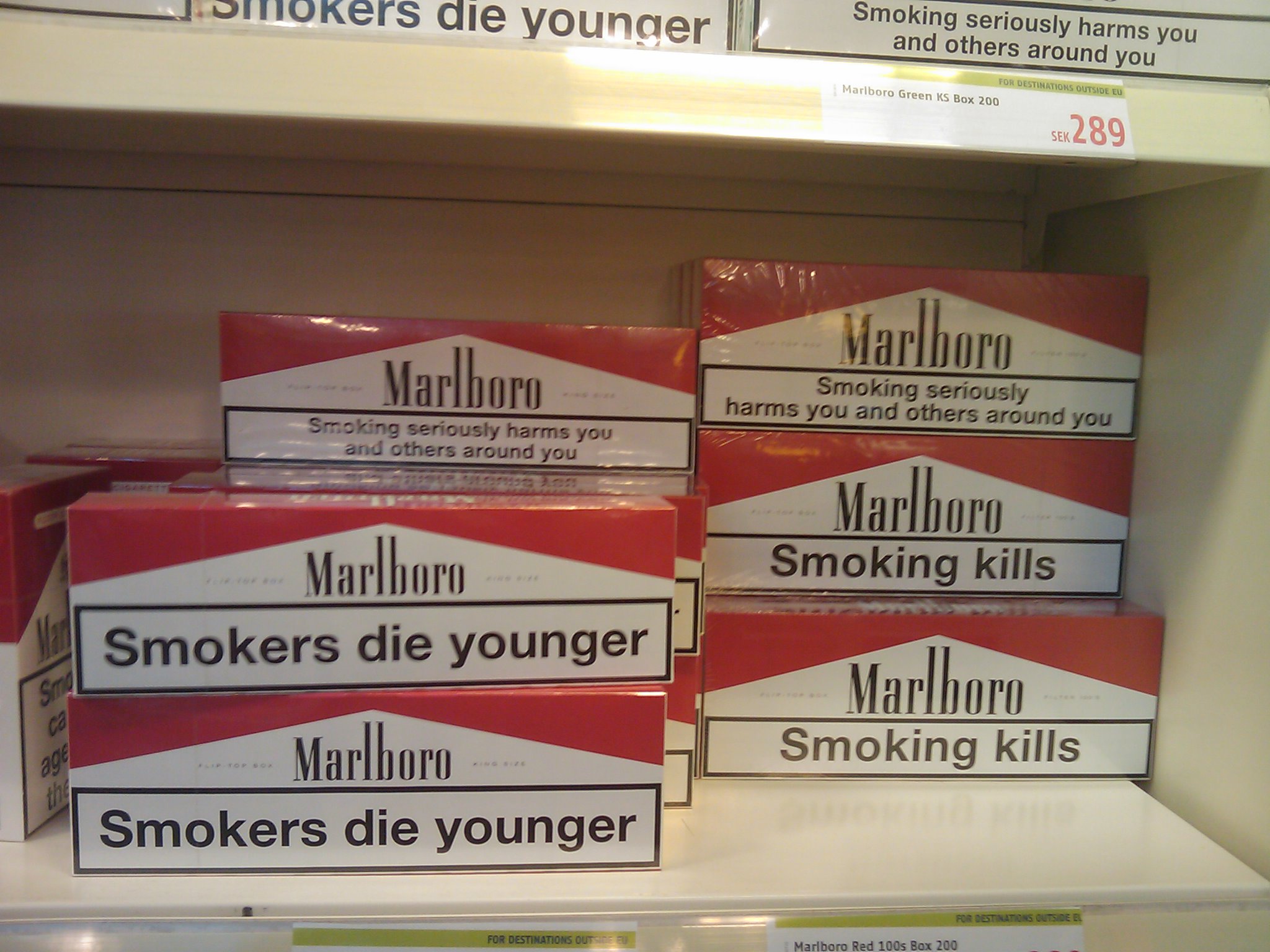
Regulation of Tobacco: Family Smoking Prevention and Tobacco Control Act
There have been many questions and much confusion concerning the Kennedy/Waxman legislation since it became law on June 22, 2009. What does FDA regulation of tobacco really mean? Why aren’t cigars or pipe tobacco treated the same way under the law as Cigarettes, RYO (roll your own), and Smokeless Tobacco or all kinds? When does all this go into effect? How does it affect me as a tobacco manufacturer, distributor, retailer, or consumer?
Most important to me: How are foreign imports like, I don’t know…SWEDISH SNUS and SCANDINAVIA SNUS, affected?!
The following is a brief summary I received (you should see how long the actual law is!) which answers many of these questions while raising others.
1. Purposes: Provides the Food and Drug Administration (FDA) with the authority to regulate tobacco products under a new chapter (Chapter IX) in the Federal Food, Drug, and Cosmetic Act (“FDCA”) (21 U.S.C. 301 et seq.) by recognizing it as the primary Federal regulatory authority with respect to the manufacture, marketing, and distribution of tobacco products.
 Ensures the FDA has the authority to address issues of particular concern to public health officials, especially the use of tobacco by young people and dependence on tobacco.
Ensures the FDA has the authority to address issues of particular concern to public health officials, especially the use of tobacco by young people and dependence on tobacco.
Authorizes the FDA to set national standards controlling the manufacture of tobacco products and the identity, public disclosure, and amount of ingredients used in the products. It also vests the FDA with the authority to regulate the levels of tar, nicotine, and other harmful components of tobacco products. [while tar levels are addressed, indicating cigarettes, this would include all tobacco products including smokeless tobacco]
While the new law permits the continued sale of tobacco products to adults in conjunction with measures to ensure that they are not sold to or accessible to underage purchasers, it also promotes cessation in order to reduce the risk of disease and the social costs association with tobacco-related diseases.
2. The law amends Section 201 of the FDCA (21 U.S.C. 321) to add the following definition of “tobacco product” — “any product made or derived from tobacco that is intended for human consumption, including any component, part, or accessory of a tobacco product (except for raw materials other than tobacco used in manufacturing a component, part, or accessory of a tobacco product.)” While not subject to immediate regulation, cigars and pipe tobacco are included in this definition, but only cigarettes, ryo cigarette tobacco and smokeless tobacco are immediately regulated.
3. New Chapter in FDCA: A new chapter (Chapter IX – Tobacco Products) is inserted in the FDCA. The chapter is broken out into the following Sections. This chapter will eventually include cigars However, the chapter initially applies only to cigarettes, ryo tobacco and smokeless tobacco.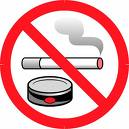
Chapter IX
Section 900. Definitions
Section 901. FDA Authority over tobacco products
Section 902. Adulterated Tobacco Products
Section 903. Misbranded Tobacco Products
Section 904. Submission of Health Information
Section 905. Annual Registration
Section 906. General Provisions Respecting Control of Tobacco Products (including Good Manufacturing Practices)
Section 907. Tobacco Product Standards (including ban on flavorings in cigarettes)
Section 908. Notification and Other Remedies (recall authority)
Section 909. Records and Reports on Tobacco Products (by manufacturers and importers)
Section 910. Application for Review of Certain Tobacco Products
Section 911. Modified Risk Tobacco Products
Section 912. Judicial Review
Section 913. Equal Treatment of Retail Outlets
Section 914. Jurisdiction of and Coordination with The Federal Trade Commission
Section 915. Regulation Requirement
Section 916. Preservation of State and Local Authority
Section 917. Tobacco Products Scientific Advisory Committee
Section 918. Drug Products used to Treat Tobacco Dependence
Section 919. User Fee
Section 920. Labeling, Record-keeping, Records Inspection
4. Section 900 (Definitions): This section defines additive, brand, cigarette (which also includes ryo), cigarette tobacco, commerce, counterfeit tobacco product, distributor (any person – other than a common carrier – who furthers the distribution of a tobacco product, whether domestic or imported, at any point from the place of manufacture to the person who sells or distributes the product to individuals for personal consumption), illicit trade, Indian tribe, little cigar, nicotine, package, retailer (any person who sells tobacco products to individuals for personal consumption, or who operates a facility where self-service displays of tobacco products are permitted), ryo tobacco, small tobacco manufacturer, smoke constituent, smokeless tobacco, state, tobacco product manufacturer, tobacco warehouse, and United States.
“Additive” — “any substance the intended use of which results or may reasonably be expected to result, directly or indirectly, in its becoming a component or otherwise affecting the characteristic of any tobacco product (including any substances intended for use as a flavoring or coloring or in producing, manufacturing, packing, processing, preparing, treating, packaging, transporting, or holding), except that such term does not include tobacco or a pesticide chemical residue in or on raw tobacco or a pesticide chemical.” [The overwhelming majority of cigarettes are not badly affected since menthol is exempt. How this is going to affect American Snus and American Smokeless Tobacco could be substantial; Swedish Snus too but to a lesser extent]
The definition of “Retailer” encompasses Internet/mail order firms.
“Large cigar” and “pipe tobacco” are not specifically defined. “Tobacco product manufacturer” means “any person, including any repacker or relabeler, who
(A) manufactures, fabricates, assembles, processes, or labels a tobacco product; or
(B) imports a tobacco product for sale or distribution in the United States”
“Small Tobacco Manufacturer” is one who employs fewer than 350 employees.
“Tobacco Warehouse” includes any person who 1) removes foreign material from tobacco leaf through nothing other than a mechanical process; 2) humidifies tobacco leaf with nothing other than potable water in the form of steam or mist; or 3) de-stems, dries and packs tobacco leaf for storage and shipment; and who performs no other actions with respect to tobacco leaf. It excludes any person who 1) reconstitutes tobacco leaf; 2) is a manufacturer, distributor, or retailer of a tobacco product; or 3) applies any chemical, additive, or substance to the tobacco leaf other than potable water in the form of steam or mist.
*5. Section 901 (FDA Authority over Tobacco Products): states that the entire chapter (Chapter IX) “shall apply to all cigarettes, cigarette tobacco, ryo tobacco, and smokeless tobacco and to any other tobacco products that the Secretary by regulation deems to be subject to this chapter.” Within 90 days after the legislation becomes law, a Center for Tobacco Products will be established within the FDA. Within that Center an office will be established to provide technical and other non-financial support to small tobacco product manufacturers to assist them in compliance.
Section 102 (Final Rule) pertains only to cigarettes, cigarette tobacco and smokeless tobacco. It requires the FDA – through the Secretary of Health & Human Services (HHS) — to publish a final rule regarding these products on the first day of the publication of the Federal Register that is 270 days or more after the date the FDA legislation is enacted. (That would appear to be about March 19, as the legislation was signed into law on June 22.) With the exception of some minor changes, the provisions in the final rule will be identical to those promulgated in the Federal Register of August 28, 1996. The rule will become effective not later than June 22, 2010, which is one year after the FDA legislation was enacted.
While the FDA has authority to regulate other tobacco products, it is required to do so by a rule making process.
Significantly, in 1995, when the FDA proposed to regulate tobacco products on its own, it specifically chose to exclude cigars and pipe tobacco because the agency had no evidence of their being drug (nicotine) delivery devices, nor did it have evidence of significant usage by kids. [Really? No significant usage by kids? Have they never heard of Blunts?]
This section also limits FDA authority. The new chapter will not apply to tobacco leaf that is not in the possession of tobacco product manufacturers, nor to the producers of tobacco leaf, including tobacco growers, tobacco warehouses, and tobacco grower cooperatives. No FDA employee will have the authority to enter onto a farm owned by a tobacco grower without the grower’s written consent. However, if a producer of tobacco leaf is also a tobacco product manufacturer or is controlled by a tobacco product manufacturer, then the producer is subject to the FDA regulations. (However, an exemption is made for producers of tobacco leaf who grow tobacco under contract with a tobacco product manufacturer and who are not otherwise engaged in the manufacturing process.)
The FDA will have no authority to promulgate regulations on any matter that involves the production of tobacco leaf or a grower of tobacco leaf, other than activities by a manufacturer affecting production.
6. Section 902 (Adulterated Tobacco Products): focuses on 1) substances added to tobacco products or present in the composition of its packaging which causes them to be adulterated, [#1 could including anything FDA or those who lobby it want] or 2) where the preparation, packaging and storage was done under unsanitary conditions, [#2: read “more inspectors with the ability to levy fines] , or 3) where the manufacturer failed to pay a user fee, [which is what this Law is really all about: license fees, user fees, compliance fees…as many fees as possible] or 4) where the products were not manufactured, packaged and stored  in conformity with Good Manufacturing Practices. [FDA, probably down to the individual Inspector level, will decide what GMP are. A way to collect more fines and fees]
in conformity with Good Manufacturing Practices. [FDA, probably down to the individual Inspector level, will decide what GMP are. A way to collect more fines and fees]
7. Section 903 (Misbranded Tobacco Products): a tobacco product will be misbranded if, for example, it does not bear a label containing the name and place of business of the manufacturer, packer or distributor, does not contain an accurate statement of the percentage of the tobacco used in the product that is domestically-grown and the percentage which is foreign-grown, or does not contain an accurate statement of the quantity of the contents in terms of weight, measure or numerical count.
8. Section 904 (Submission of Health Information): establishes several deadlines including:
A. Within 6 months (that is, before December 31, 2009), each tobacco manufacturer or importer (of cigarettes, ryo tobacco, and/or smokeless tobacco) is required to submit the following information to the Secretary of HHS:
1. A listing of all ingredients, including tobacco, substances, compounds, and additives that are, as of such date, added by the manufacturer to the tobacco, paper, filter, or other part of each tobacco product by brand and by quantity in each brand and sub-brand. [“additives” are left pretty open. Could compliance required so much detail that the product recipe is revealed? Is Coca Cola next?!]
2. A description of the content, delivery, and form of nicotine in each tobacco product measured in milligrams of nicotine in accordance with regulations promulgated by the Secretary of HHS in accordance with section 4(A) (5) of the Federal Cigarette Labeling and Advertising Act.
B. Beginning 6 months after June 22, 2009, the date of enactment, manufacturers or importers must submit all documents developed after June 22, 2009 that relate to health, toxicological, behavioral, or physiologic effects of current or future tobacco products, their constituents (including smoke constituents), ingredients, components, and additives. [Again, seems to speak to cigarettes but includes smokeless tobacco and snus. Seems the 5th Amendment is being revoked retroactively.]
C. No later than June 22, 2011, that is 2 years after the date of enactment, the FDA must establish, and periodically revise, if necessary, a list of harmful and potentially harmful constituents, including smoke constituents, in each tobacco product by brand and by quantity in each brand and sub-brand. The agency will publish a public notice requesting the submission by interested persons of scientific and other information concerning the harmful and potentially harmful constituents in tobacco products and tobacco smoke. [sounds like something Committee for Tobacco Free Kids included. Toothless except for propaganda purposes unless combined with another section]
D. Beginning June 22, 2012, that is 3 years after the date of enactment, each tobacco manufacturer or importer is required to submit to the FDA a listing of all constituents, including smoke constituents as applicable, identified by the FDA as harmful or potentially harmful to health by brand and by quantity in each brand and sub-brand.
(Within 3 years after June 22, 2009, the FDA is required by Section 915 to promulgate regulations requiring the testing and reporting of tobacco product constituents, ingredients, and additives, including smoke constituents, by brand and sub-brand that the agency determines should be tested. These regulations may require disclosure of the test results on package labeling or advertising. The FDA can conduct this testing itself or require others to do it. Small tobacco manufacturers are given a four-year period over which to test and report of all their tobacco products – one quarter of their products each year. In addition, two or more small manufacturers are allowed to join together to purchase laboratory testing services in order to assure they get access and fair pricing of those services.) [Aside from raising the prices of US-made products, conforming to the Swedish Food Act should be sufficient for FDA, I would think, for Swedish Snus.]
E. Anytime after the date of enactment, the FDA can request any documents which a tobacco manufacturer or importer (or agent thereof) possesses relating to research activities, and research findings, conducted, supported, or possessed by the manufacturer (or agents thereof) on the health, toxicological, behavioral, or physiologic effects of tobacco products and their constituents (including smoke constituents), ingredients, components and additives. [will probably cause less testing, research activities and studies except what is absolutely mandated in Section 915. Bad news for consumers of any tobacco product…except cigars and pipe tobacco, of course]
The FDA can also require all documents (including underlying scientific information) relating to research activities and research findings, conducted, supported or possessed by the manufacturer that relate to the issue of whether a reduction in risk to health from tobacco products can occur upon the employment of technology available or known by the manufacturer, as well as all documents (including underlying scientific or financial information) relating to marketing research involving the use of tobacco 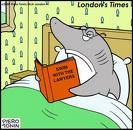 products or marketing practices and the effectiveness of such practices used by tobacco manufacturers and distributors. (Importers of a product not manufactured in the U.S. are also required to supply the information required of a tobacco product manufacturer.) However, because Section 901 indicates that Chapter IX applies to cigarettes, ryo and smokeless tobacco only, manufacturers of cigars and pipe tobacco are not required to submit this information until those products become regulated. [Inserted to make Class Action lawsuits easier for the lawyers.]
products or marketing practices and the effectiveness of such practices used by tobacco manufacturers and distributors. (Importers of a product not manufactured in the U.S. are also required to supply the information required of a tobacco product manufacturer.) However, because Section 901 indicates that Chapter IX applies to cigarettes, ryo and smokeless tobacco only, manufacturers of cigars and pipe tobacco are not required to submit this information until those products become regulated. [Inserted to make Class Action lawsuits easier for the lawyers.]
9. Section 905 (Annual Registration): defines the term “manufacture, preparation, compounding, or processing” to include “repackaging or otherwise changing the container, wrapper, or labeling of any tobacco product package in furtherance of its distribution from the original place of manufacture to the person who makes final delivery or sale to the ultimate consumer or user.” It requires annual registration with the FDA on or before December 31 each year to include — for a corporation — the name of each corporate officer and director, and the state of incorporation. The registration information must include a list of all tobacco products being manufactured, prepared, compounded, or processed by that person for commercial distribution. This information will be publicly available. Registrants will be required to report during the months of June and December any change in the product list (new products or discontinued products). Each registered company must be inspected once every two years by the FDA.
Foreign establishments engaged in the manufacture, preparation, compounding, or processing of tobacco products also are required to register and provide their list of products. The regulations requiring this information “shall include provisions for registration upon condition that adequate and effective means are available, by arrangement with the government of the foreign country or otherwise, to enable the Secretary to determine from time to time whether the tobacco products shall be refused admission to the U.S.” [A Swedish Snus Embargo? May it never be!]
government of the foreign country or otherwise, to enable the Secretary to determine from time to time whether the tobacco products shall be refused admission to the U.S.” [A Swedish Snus Embargo? May it never be!]
10. Section 906 (General Provisions Respecting Control of Tobacco Products): The FDA is given the authority to issue regulations restricting the sale and distribution of a tobacco product, including access to, and the advertising and promotion of the product “consistent with and to full extent permitted by the First Amendment to the Constitution.” if the Secretary determines that the regulations will be appropriate for the protection of the public health. However, there will be no restrictions establishing a minimum age of sale of tobacco products to any person older than 18. (This is subsequently undercut by another provision which allows the states to enact their own laws regarding minimum age.) The sale of tobacco products in face-to-face transactions cannot be prohibited by a specific category of retail outlets. [This will result in lawsuits against the US Government on First Amendment violations. Rumors indicate more than one tobacco company is already preparing to take this Law to court]
Remote Sales: Within 18 months (that is, by approximately December 31, 2010 at the latest), the agency is required to promulgate regulations regarding the sale and distribution of tobacco products that occur through means other than a direct, face-to-face exchange between a retailer and a consumer in order to prevent the sale to underage individuals, including requirements for age verification. And within two years after the legislation is enacted (by no later than June 22, 2011), the FDA is required to issue regulations to address the promotion and marketing of tobacco products sold in other than a direct face-to-face in order to protect underage individuals. (Again, this will not apply to cigars or pipe tobacco.) [More lawsuits attacking the Constitutionality of this law]
FDA is required to issue regulations to address the promotion and marketing of tobacco products sold in other than a direct face-to-face in order to protect underage individuals. (Again, this will not apply to cigars or pipe tobacco.) [More lawsuits attacking the Constitutionality of this law]
10. Section 906 also gives the FDA the authority to require companies to conform to Good Manufacturing Practices under which the agency can prescribe regulations — which may differ based on the type of tobacco product involved — requiring that the methods used in, and the facilities and controls used for, the manufacture, pre-production design validation (including a process to assess the performance of a tobacco product), and the packaging and storage conform to good manufacturing practices, or hazard analysis and critical control point methodology. This also may include the testing of raw tobacco for pesticide chemical residues regardless of whether a tolerance for such chemical residues has been established.
In establishing the effective date of a Good Manufacturing Practice regulation, the FDA is required to take into account the differences in the manner in which the different types of tobacco products have historically been produced, the financial resources of the different tobacco product manufacturers, and the state of their existing manufacturing facilities, and must provide a reasonable period of time for manufacturers to conform to Good Manufacturing Practices. However, compliance with these practices will not be required for the first 3 years after FDA regulation is signed into law – for small tobacco product manufacturer, that grace period is 4 years.
Any person subject to the good manufacturing practice requirements may petition the FDA for a permanent or temporary variance.
11. Section 907 (Tobacco Product Standards): Beginning 3 months after enactment of the legislation (that is, by September 22, 2009), a cigarette or any of its component parts (including the tobacco, filter or paper) are forbidden from having as a constituent (including a smoke constituent) or additive, an artificial or natural flavor (other than tobacco or menthol) or an herb or spice, including strawberry, grape, orange, clove, cinnamon, pineapple, vanilla, coconut, licorice, cocoa, chocolate, cherry, or coffee, that is a characterizing flavor of the product or its smoke. The FDA is not limited in its authority to take action applicable to menthol or any artificial or natural flavor, herb, or spice not specified above. [I don’t see Bergamot listed although cinnamon, vanilla, and licorice flavors are popular in Swedish/Scandinavian Snus. American snus and smokeless tobacco manufacturers may have a tougher time with this. In any case, Americans Freedom of Taste will be a thing of the past. This will probably end up in Court too; especially over clove cigarettes.]
Special Rule Regarding Tobacco: Beginning June 22, 2011, two years the law was enacted, manufacturers are prohibited from using tobacco, including foreign-grown tobacco, containing a pesticide chemical residue that is at a level greater than is specified by any tolerance applicable under Federal law to domestically grown tobacco. Again, this will not apply to foreign tobacco used in cigars or pipe tobacco. [So cigar and pipe tobacco can be loaded up with pesticides and FDA doesn’t care? This special treatment for cigars and pipe tobacco is just TOO much]
“Tobacco product standards” may be adopted by FDA if it finds that such action “is appropriate for the protection of the public health,” based on “risks and benefits to the population as a whole, including users and non-users of the tobacco product.”[Scientifically, this issue is so vague it allows FDA to work on ‘feelings’ and ‘anecdotal evidence’. Part of a Snus Manufacturer receiving a Reduced Harm Product designation will depend on proving to FDA the benefits to society as a whole. It’s not going to be an easy a task as one might think.]
When it decides to propose a rule making for establishing, amending or revoking tobacco product standards, the FDA is required to publish it in the Federal Register, set forth a finding with supporting justification that the standard is appropriate for the protection of the public health; invite interested persons to submit a draft or proposed standard for consideration, invite interested persons to submit comments on structuring the standard so that it does not advantage foreign-grown tobacco over domestically grown tobacco, invite the Secretary of Agriculture to provide any information or analysis which the Secretary believes is relevant to the proposed standard and provide a comment period of not less than 60 days. Once the FDA comes out with a final rule, it may not take effect before one (1) year after its publication unless it is deemed “necessary for the protection of the public health.”
The effective date of a product standard shall be established so as to minimize, consistent with the public health, economic loss to, and disruption or location of, domestic and international trade. The FDA is prohibited from banning tobacco products or requiring the reduction of nicotine yields to zero. [Big deal. They can still mandate nicotine levels be reduced to 1mg/g…I fear for the Extra Strong Snus’s…I even fear for mini-portions. The hypocrisy is that lowering nicotine levels will not make it easier or cause tobacco users (especially cigarettes) to quit using tobacco: it will force the tobacco user to use even more of their tobacco product of choice than before to achieve their accustom nicotine levels. I’m sure Philip Morris USA wrote that part]
The agency is also required to consider information submitted in connection with a proposed standard regarding the technical achievability of complying with that standard.
12. Section 913 (Equal Treatment of Retail Outlets): requires the FDA to issue regulations requiring retail establishments whose predominant business is the sale of tobacco products to comply with any advertising restrictions applicable to retail establishments accessible to individuals under the age of 18. [Another First Amendment lawsuit waiting to happen.]
13. Section 915 (Regulation Requirement): requires that not later than June 22, 2012 — 3 years after the FDA legislation is enacted into law, the agency must promulgate regulations which require the testing and reporting of tobacco product constituents, ingredients, and additives, including smoke constituents, by brand and sub-brand that the FDA determines should be tested to protect the public health. In addition, the agency may require that tobacco product manufacturers, packagers, or importers make disclosures relating to the results of this testing. There are special provisions which give small tobacco product manufacturers (those with less than 350 employees) more time to comply and conduct testing and reporting.
14. Section 916 (Preservation of State and Local Authority): allows a Federal agency (including the Armed Forces), as well as state and local governments, or the government of an Indian tribe the ability to enact and enforce laws and regulations that are in addition to, or more stringent than the FDA provisions. [Proposals are already on the table to ban ALL tobacco use by members of the US Armed Forces. More on this in another article.] This includes laws or regulations relating to or prohibiting the sale, distribution, possession, exposure to, access to, advertising and promotion of, or use of tobacco products by individuals of any age, reports to the State, or measures relating to fire safety standards for tobacco products. [More First Amendment law suits. The lawyers are getting a very sweet deal with this law] No provision in the new FDA law shall limit any State, Tribal, or local taxation of tobacco products. [Of COURSE NOT! Raise taxes on tobacco users again!] However, no State or political subdivision may establish any requirement which is different from, or in addition to the requirements relating to product standards, pre-market review, adulteration, misbranding, labeling, registration, good manufacturing standards, or modified risk products.
15. Section 917 (Tobacco Products Scientific Advisory Committee): This committee is to be established not later than six months after the legislation is signed into law—that is, by around year’s end 2009. It will consist of 12 members – 9 voting members and 3 non-voting members. The non-voting members will include an individual who will represent the interests of the tobacco manufacturing industry, an individual representing the interests of the small business tobacco manufacturing industry, and an individual representing the interests of tobacco growers. The voting members will consist of 7 physicians,  dentists, scientists, or health care professionals practicing in the area of oncology, pulmonology, cardiology, toxicology, pharmacology, addiction, or any other relevant specialty, an employee of a state or local government or of the Federal government, and a representative from the general public. The purpose of the committee is to provide advice, information and recommendations to the FDA. [The old Soviet Union would be proud of this type of ‘Advisory Committee’.]
dentists, scientists, or health care professionals practicing in the area of oncology, pulmonology, cardiology, toxicology, pharmacology, addiction, or any other relevant specialty, an employee of a state or local government or of the Federal government, and a representative from the general public. The purpose of the committee is to provide advice, information and recommendations to the FDA. [The old Soviet Union would be proud of this type of ‘Advisory Committee’.]
16. Section 919 (User Fees): The FDA will assess a quarterly user fee upon each manufacturer and importer of tobacco products subject to Chapter IX. However, initially the user fees will be assessed only on cigarettes, ryo and smokeless tobacco because they are the only products subject to this chapter. User fees will not be assessed on the cigar and pipe tobacco industries unless and until these products are regulated. [User Fees..which will be passed onto tobacco consumers..EXCEPT  cigars and pipe tobacco AGAIN]
cigars and pipe tobacco AGAIN]
Total user fees assessed each year shall not exceed what is necessary to pay for the costs of FDA activities regulating the products (cigarettes, ryo and smokeless tobacco) subject to Chapter IX. The user fees will amount to $85 million in FY 2009, and then $235 million (FY 2010), $450 million (FY 2011), $477 million (FY 2012), $505 million (FY 2013), $534 million (FY 2014), $566 million (FY 2015), $599 million (FY 2016), $635 million (FY 2017), $672 million (FY 2018), $712 million (FY 2019 and thereafter). [Who determines ‘necessary costs’? This is a Government Bureaucracy…they live to increase ‘necessary costs’ to retain power and remain relevant.]
User fees will be assessed essentially using the same methodology as the tobacco buyout program. However, no user fees will be assessed on a class of tobacco products until the product is actually subject to regulation. If a user fee is eventually imposed on cigars, the percentage share of each cigar manufacturer or importer will be based on the excise taxes which it paid during the prior fiscal year, rather than on the number of units as is the case with the tobacco buyout program. If a product is not regulated, the amount of user fees that it would have been assessed will be reallocated on a pro rata basis to the tobacco products that are regulated. [cigars and pipe tobacco exempt again]
.
17. Title III – Prevention of Illicit Trade in Tobacco Products Section 921 (labeling, record keeping, & records inspection): mandates that beginning one year after the FDA legislation is enacted, the label, packaging, and shipping containers of smokeless tobacco products introduced or delivered into interstate commerce in the U.S. must bear the statement: Sale only allowed in the U.S. The effective date shall be the date of manufacture. The same requirement applies to cigarettes but effective 15 months are the issuance of regulations. [Sale only allowed in the U.S.? Why? Isn’t our trade imbalance bad enough?]
The FDA will promulgate regulations regarding the establishment and maintenance of records by anyone who manufactures, processes, transports, distributes, receives, packages, holds, exports, or imports tobacco products – in this case meaning cigarettes, ryo tobacco and smokeless tobacco. In promulgating these regulations, the FDA will consider which records are needed for inspection in order to monitor the movement of tobacco products from the point of manufacture through distribution to retail outlets to assist in investigating potential illicit trade, smuggling, or counterfeiting of tobacco products. The agency may require codes on the labels of tobacco products or other designs or devices for the purpose of tracking or tracing the tobacco product through the distribution system. It is required to take into account the size of a business in promulgating these 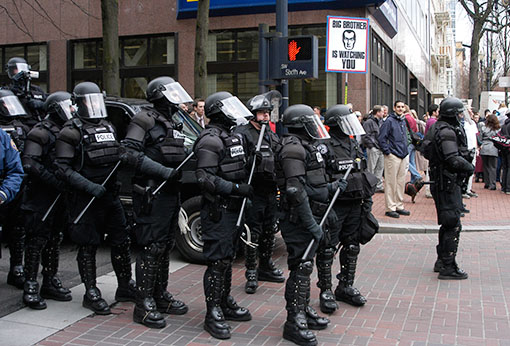 regulations.[Very expensive to comply with which will of course be passed along to consumers. Creates a whole new level of unnecessary paperwork, involves the Department of Homeland Security by implication, and combined with The PACT legislation, will turn a lot of hardworking Americans into Tobacco Terrorists.]
regulations.[Very expensive to comply with which will of course be passed along to consumers. Creates a whole new level of unnecessary paperwork, involves the Department of Homeland Security by implication, and combined with The PACT legislation, will turn a lot of hardworking Americans into Tobacco Terrorists.]
If a manufacturer or distributor has knowledge that a tobacco product (cigarettes, ryo or smokeless tobacco) has been imported, exported, distributed, or offered for sale in interstate commerce by a person without paying duties or taxes required by law, or imported, exported, distributed, or diverted for possible illicit marketing, the manufacturer or distributor must notify the U.S. Attorney General and Secretary of the Treasury. [Rat out your neighbor, the Tobacco Lord. This worked well in the pre-unification East Germany]
The FDA will not require any retailer to maintain records relating to individual purchasers of tobacco products for personal consumption.
A manufacturer or distributor must report promptly to the Attorney General and the Secretary of the Treasury if it has knowledge that supports a conclusion that any of his products has been imported, exported, distributed, or offered for sale in interstate commerce by a person without paying duties or taxes required by law, or imported, exported, distributed or diverted for possible illicit marketing. [“has knowledge that supports a conclusion”? Who would admit to that under this law? Instead of self-policing itself as it does now, the industry will start practicing ‘Don’t Ask-Don’t Tell’. This will lead to more illicit marketing and an even bigger black market in tobacco products (except for cigars and pipe tobacco) Once again, the Government in its wisdom takes a small problem and turns it into a huge one.]
Comptroller General Study on Cross-Border Trade: Not later than 18 months after the legislation is signed into law, the Comptroller General of the U.S. must study and submit to Congress a report on the cross-border trade in tobacco products (cigarettes, ryo tobacco and smokeless tobacco). Cross-border also includes trade across the various states. The report will examine illicit trade and trade of counterfeit tobacco products, cross-border advertising, and the collection of data on the health effects (particularly on those under 18 years of age) resulting from cross-border trade – including the health effects resulting from the differing tax rates applicable to tobacco products and the illicit trade and the trade in counterfeit tobacco. [Might be basis for a lawsuit for violation of the Interstate Commerce clause. More First Amendment challenges. Tobacco users are Terrorists.]
Cigarette Warning Labels: Nine (9) randomly displayed, rotating warnings are required on cigarette packages manufactured after September 22, 2010 – 15 months after the legislation was enacted into law. Each warning shall be underneath the cellophane or other clear wrapping and shall comprise the top 50% of the front and rear panels. The word “WARNING” shall be in capital letters and, in general, all text shall be in conspicuous and legible 17-point type. The text of each warning will be black on a white background, or white on a balk background in a manner than contrasts, by typography, layout, or color with all other printed material on the package. [I’ve included pictures of cigarette cartons from the EU. They accomplish nothing. Probably another feel-good idea from CTFC.
Not later than June 22, 2011 — 2 years after the legislation was enacted, the FDA is required to issue regulations that require color graphics depicting the negative health consequences of smoking to accompany the labels.[Joe Camel puking blood?]
There is also a provision which allows the states to impose specific bans or restrictions on the time, place, and manner, but not the content, of cigarette advertising or promotion. [Why not the content? Time, place, and manner is already a First Amendment violation. Why not go for broke?]
Smokeless Tobacco Warning Labels: On June 22, 2010, one year after the legislation was enacted, four (4) rotating, randomly displayed labels are required on packages of smokeless tobacco – each of which is to be located on the 2 principal display panels, be in 17-point type and comprise at least 30% of each panel. ‘The labels must be either in black text on a white background or white text on a black background. The effective date applies to the date of manufacture. [It has already been proven that smokeless tobacco IS a safer alternative to smoking cigarettes: 6000 to some now say 10,000 carcinogenic and dangerous substances are instantly created just by lighting a cigarette. Smokeless tobacco; especially Swedish Snus manufacturers, should be able to say that. Swedish Snus has been proven NOT to cause Mouth Cancer also. Why should they have to carry labels which are in themselves government-mandated propaganda and false advertising? They will until the Reduced Harm Product designation is granted AND is honest.]
So what does all this mean? Cigars and Pipe Tobacco which have been shown to be a cause of throat and oral cancer are exempted from most of The Smoking Prevention and Tobacco Control Act.
Except for menthol and a few other things Philip Morris USA protected when helping to write this law, tobacco products available for sale within the United States are going to become more and more tasteless and lower in nicotine which will increase individual consumption.
New taxes, fees, and a much higher cost of doing business cause tobacco product prices to skyrocket. This will encourage illicit sales and smuggling of tobacco products which will spike to new levels.
The winners? Cigarette companies, lawyers, organized crime, terrorist groups, politicians and feel-good activist groups who can use this bill as a tool to raise even more contributions.
The losers? The American tobacco consumer….especially the 46MM cigarette smokers who will be unable to transition to Real Snus; maybe even American snus too, who will be denied a real, 98%+ less harmful alternative to cigarettes.
Those who do not learn from history are doomed to repeat it. Remember how ‘successful’ alcohol prohibition was 80 years ago or so. Here we go again.
LARRY WATERS
Snus Lord
Reporting for the SnusCENTRAL.org Cartel
About author
You might also like
Swedish Match Attacks! Introducing Revolutionary NEW Snus Brand and Concept
Swedish Match Lab Series 0102 Snus Breaks the Snus Mold! In the beginning, there was Swedish Snus with its centuries long history, recipes, and traditions. Then one dark day in
Snus User turns Pro: the Amazing Offroad Brandy Alexander Portion Snus Story
I don’t often write snus reviews. It’s not that I can’t; it’s just that my credo has always been in judging a snus, the mouth of each snus user is
The LAB 03 Swedish Snus Review
The LAB 03 is the latest addition to Swedish Match’s The LAB brand of snus. It fills the regular nicotine strength hole left by the delisting of LAB 01 in


